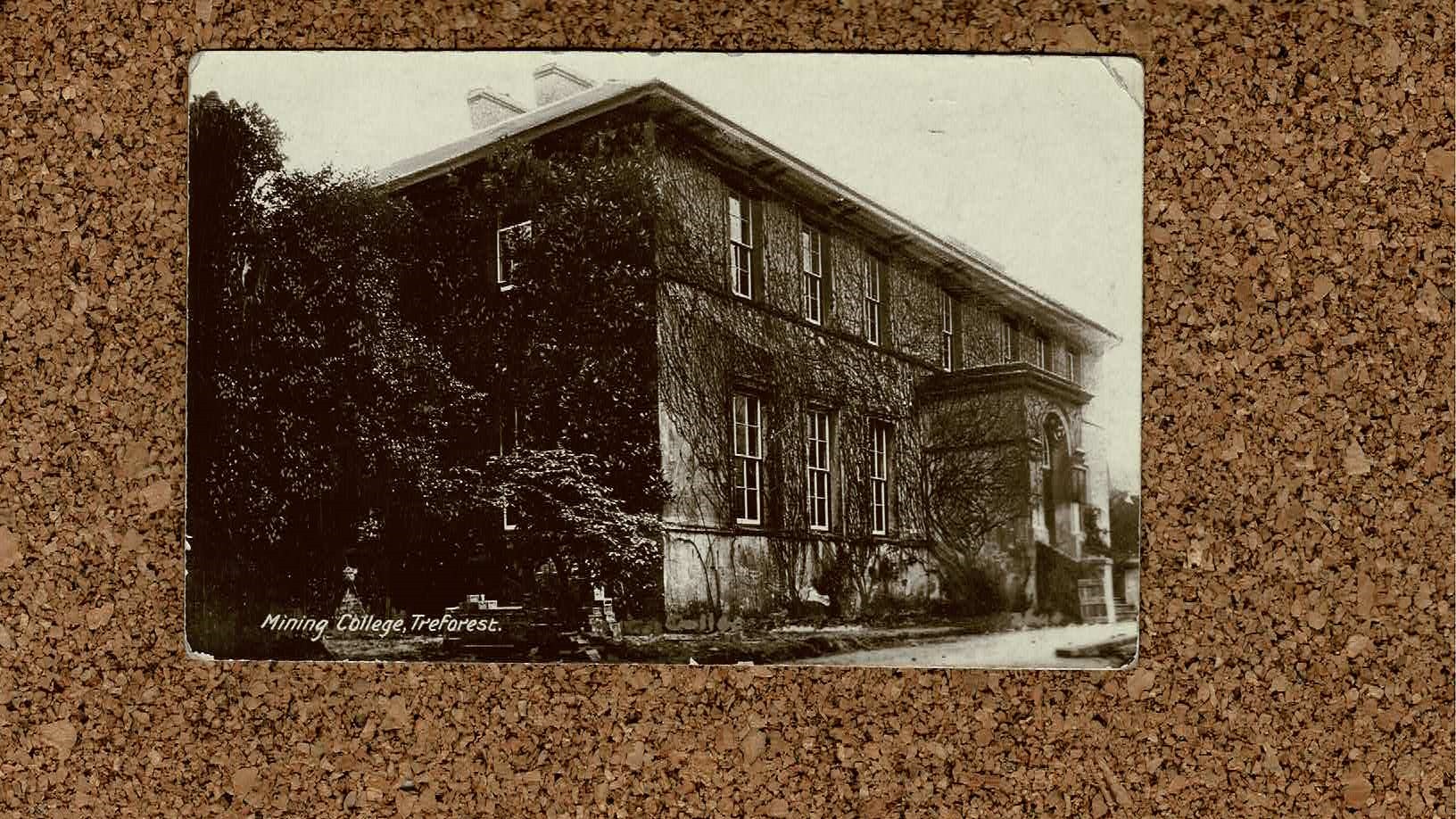Welcome to Treforest!
On Wednesday 15 October 1913, teaching started at the South Wales and Monmouthshire School of Mines. This was supported by major local coal magnates, who funded it through a levy of a penny on every ten tons of coal mined by their companies. The initial cohort comprised 17 students, including three from China, studying for a mining diploma.
You say you want a resolution
Mining was one of the big local industries (along with iron and steel, especially in and around Merthyr Tydfil, further up the river Taff) and a mining diploma would have offered a means of advancement. But not everybody saw it that way: here’s a report from the Rhondda Socialist Newspaper, Saturday 13 June 1914, on a meeting of labour representatives in Cardiff on 2 June:
The question of mining education was discussed, and a resolution protesting against the Glamorgan County Council’s action in supporting the Treforest Mining School was unanimously carried. It was clearly pointed out that this school was out to train officials for the masters and, as Jack Prowle pointed out, the men that squeezed the most made – from the masters’ point of view – the best officials, and hence made paupers of the workers”
The resolution did not stop mining education at Treforest. But the post-WW1 great depression had an impact: the school was taken over by the Glamorgan County Council. It became the Glamorgan Technical College in 1949, and in 1958 the Glamorgan College Technology. Its range of courses had expanded far beyond mining, and it offered full-time, part-time and sandwich courses. In 1967 the first Welsh for Adults course was offered by the College.
The College became Glamorgan Polytechnic in 1970, and, following a merger with the Glamorgan College of Education in 1975, was renamed as the Polytechnic of Wales. And, in line with polytechnics in England, it became the University of Glamorgan in 1992.
Newport news
Let us now go down the road to Newport, as we need to tell another, parallel, story. In 1841 a mechanics’ institute was established in Newport. A subscription of 2 shillings per quarter enabled members to attend classes at the Institute. In 1910 the Newport Technical Institute followed, and in 1914 the Monmouthshire Training College opened in Caerleon, the old Roman settlement just north of Newport. These institutions – which had by then undergone various changes in name and organisation (by which I mean I can’t say exactly what these were!) – merged in 1975 to form the Gwent College of Higher Education.
In 1996 the Gwent College of Higher Education was admitted to the University of Wales, as the University of Wales College, Newport, and in 2004, as a full member of the federal University of Wales, it became University of Wales, Newport.
Valleys and mergers
We now need to go up to the heads of the valleys, to Merthyr Tydfil. Merthyr Tydfil College became part of the University of Glamorgan Group – not actually part of the university, but owned by the University. This was an innovative approach, and enabled easier collaboration between FE and HE. The same mechanism, the next year, enabled the Royal Welsh College of Music and Drama (the Welsh conservatoire), to become a member of the University of Glamorgan Group, whilst retaining its identify, and much operational autonomy.
At this point the government steps in. Leighton Andrews, then Minister for Education within Welsh Government, delivered a speech at Cardiff University in which he called, inter alia, for Welsh universities to acknowledge the fact of devolution, and to work more with Welsh government. Underpinning this was a view that there were too many universities in Wales, and pressure was applied on some universities to merge. This included proposals for the merger of the University of Glamorgan; University of Wales Newport; and Cardiff Metropolitan University.
These proposals were not, to say the least, universally welcomed. Cardiff Metropolitan was against it, and fought, successfully, to preserve its autonomy. But the University of Glamorgan and the University of Wales, Newport, agreed to merge, and in 2013 the University of South Wales was established.
The university now has campuses in Treforest, Glyntaff (the other side of the Taff from Treforest), Cardiff and Newport, as well as the Coleg Merthyr Tydfil and the Royal Welsh College of Music and Drama. Tŷ Crawshay, the building shown on the card, houses the Vice-Chancellor’s office and other functions. And students from over 120 countries study at the university, building on the legacy of the three pioneering Chinese students back in 1913.














Ah the Gwent College of Higher Education, spent 3 years studying there on block release at the Newport Allt-Yr-Yn campus (now a housing estate).